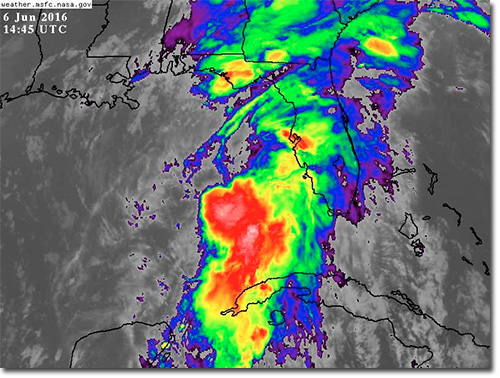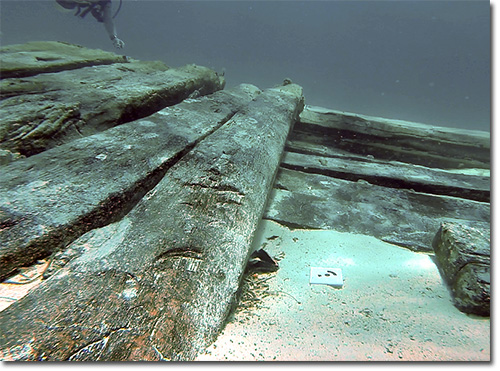Weather Days and Historical Readings By Olivia Thomas June 6, 2016

Tropical Storm Colin (image courtesty NASA/MSFC Earth Science Office 2016).
After a relaxing couple days off work (and off Broad Key), we all came back to the research station last night ready to get back to work. Unfortunately, Mother Nature and Tropical Storm Colin had other ideas. Even though Colin was anticipated to track north of us, we still felt the side effects. As the winds picked up, the sky got cloudy, and NOAA advisories were issued, we made alternative plans to get work done indoors.
One team was assigned to processing photo and video files from our last day on site, one team worked on expanding the site map and reconstruction data, and one team was assigned to historical research of ships believed to have sunk in the area.
As part of the research team, I began looking for information about Spanish-British relations in and around Florida pre- and post-Revolutionary War. The timber analysis from the keel, frames and planks revealed that the ship was built using wood from the American Northeast. Thus we also looked into comparing the types of wood from the Pillar Dollar Wreck, to historic accounts of the same types of timber used in shipbuilding in the eighteenth century.

Frames and planking with keel and keel bolt in the background. The target in the middle is part of our photogrammetry process (photo by O. Thomas).
As the site has been scoured by treasure hunters, there is very little diagnostic data left for us to use in the discernment of an origin and identity of this wreck site. A single Pillar Dollar dated to 1770 gives us a hint of what time frame to begin our research in. There are also a few vague references to the location of this wreck in a variety of publications that sent us down a few rabbit holes looking for answers, and have led to several theories as to the identity of the Pillar Dollar Wreck.
I spent most of the day combing through modern publications (journal articles, theses, book chapters), as well as digitized historical documents (newspapers, registries, catalogues), looking for any hint of a ship that might match the construction elements, material cultural remains, and final resting location of the Pillar Dollar Wreck. While there was no “x marks the spot” in the historical records, and many weird theories do not pan out, it is fun and fascinating to hunt through old records, and make a list of more books I want to buy!
With any luck we’ll be back on the water tomorrow to finish mapping the most recently excavated sections of the site, take more pictures, and video footage; but if not, more research and reading never hurt anyone!
Previous Next

